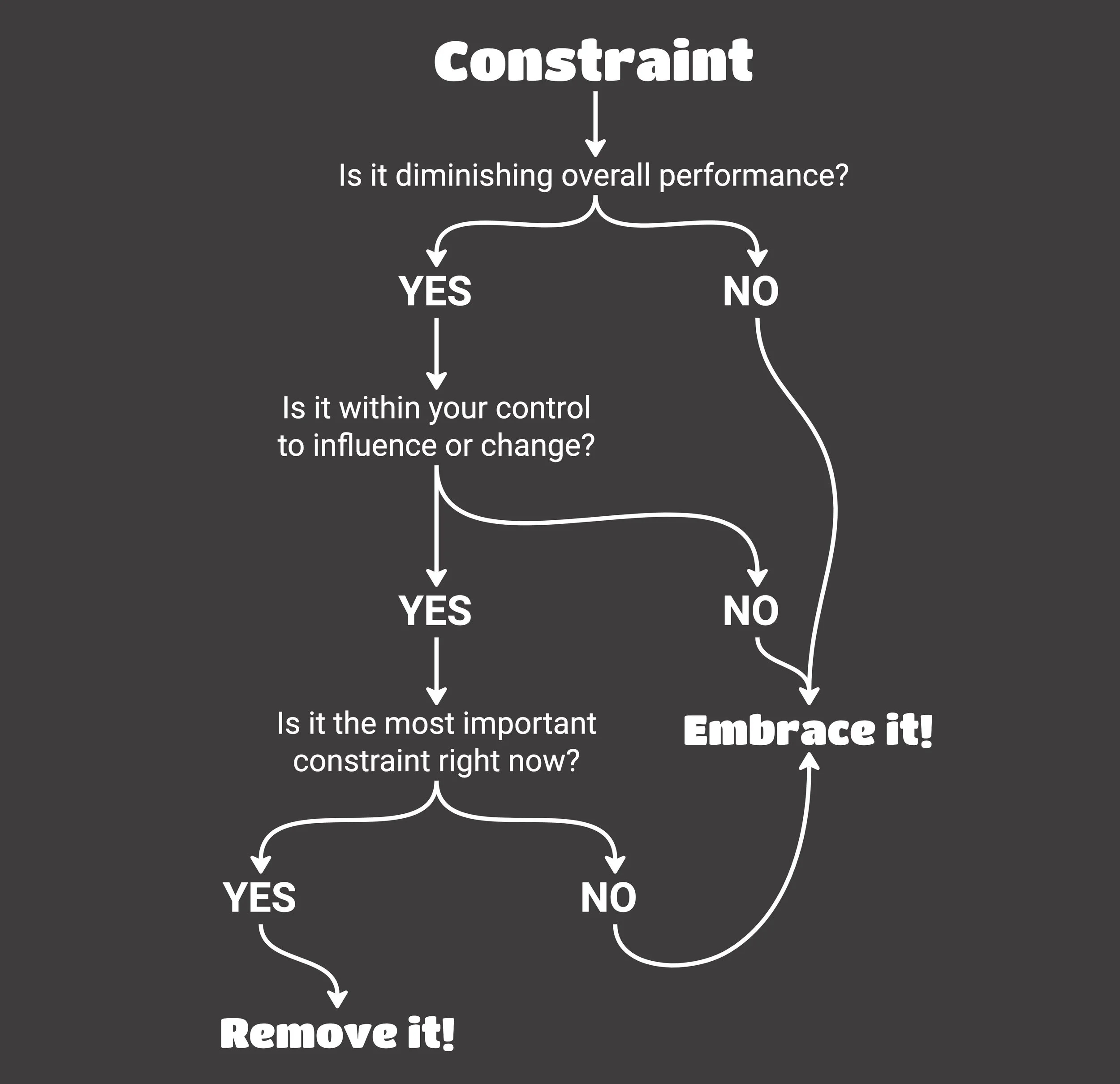The Power of Constraints in Nonprofit Management
Happy Friday!
Can two contradictory statements both be true?
Yes. And no.
Consider the following aphorisms:
“Look before you leap.” vs. “He who hesitates is lost.”
“Absence makes the heart grow fonder.” vs. “Out of sight, out of mind.”
“The squeaky wheel gets the grease.” vs. “Never miss an opportunity to shut up.”
“Remove constraints.” vs. “Embrace constraints.”
Let’s dive into constraints.
Remove Constraints
The Theory of Constraints is a management framework that says the overall performance of a system (e.g. an organization) is limited by its weakest part. So don’t waste resources obsessively optimizing other parts of the system until the primary constraint is addressed.
You wouldn’t buy a Ferrari to improve your rush hour commute because you understand that your constraint is not “potential speed.” Instead, you might vary your departure time, take the train, or buy a webcam and some business casual pajamas.
Similarly, you wouldn’t try to fix chronic underperformance by doubling your recruitment budget if the constraint is your onboarding program.
Embrace Constraints
In the right context, constraints can enhance system performance by inspiring new levels of creativity. A good constraint can force people to think differently and discover unexpected solutions they would have never imagined without the constraint.
To jazz things up at work, consider adding a constraint to a project to see what new ideas or methods emerge. Start with a limiting factor and see how your team would respond if that limiting factor were 10X or 100X more limiting.
Think 1/10th the cost.
And 100 times faster.
And all in haiku.
So when do you remove a constraint and when do you embrace it? I made a chart for that. You have two seconds to read it (yay, a constraint!) because we’e a solid 58 seconds into this one-minute email.
Have a great weekend!
Drew

